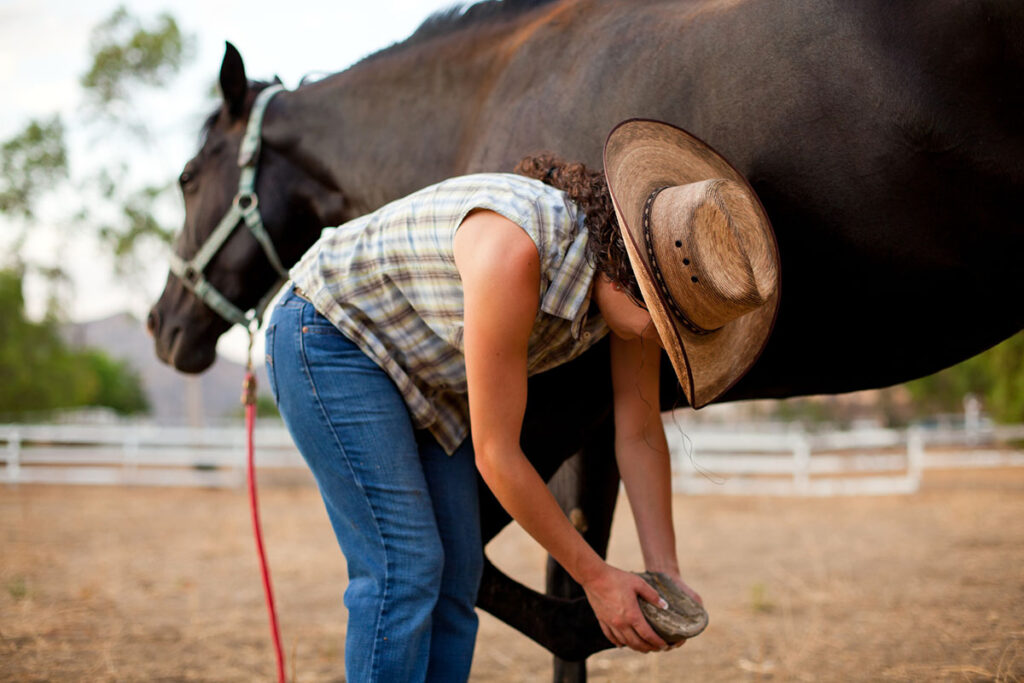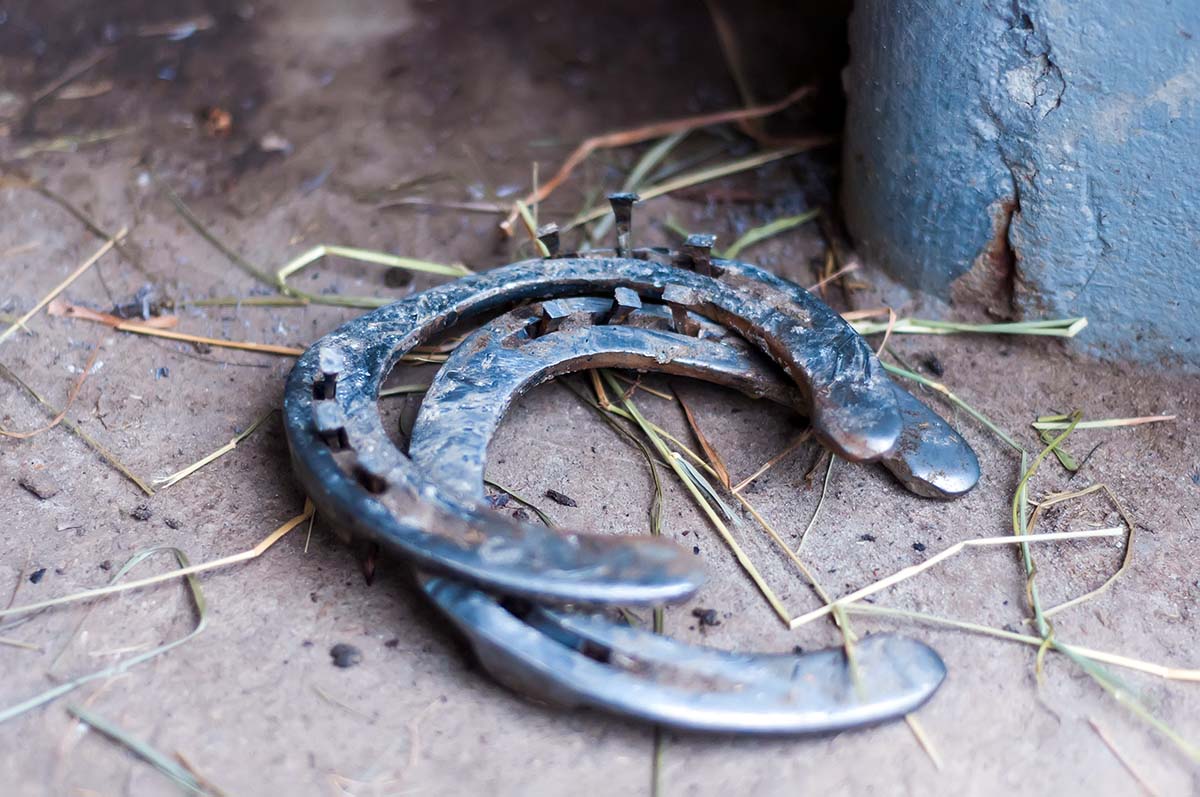You turn your horse out in the pasture after days of rain, and he gallops off, kicking up his heels and squealing with joy. When you bring him back in that evening, you notice something is missing—a perfectly good horseshoe. This is a fairly common predicament for owners of shod horses. Here’s what to do if your horse lost a shoe.
The First Steps if Your Horse Lost a Shoe
First things first: Evaluate the hoof and determine if your horse is lame. Look for signs your horse stepped on any nails as the shoe came off, such as obvious puncture wounds. Use your fingertips to press on the sole area of the hoof and see if your horse reacts. If he does, that means his foot is sore.
Walk your horse down the barn aisle or another firm, flat surface to see if he is favoring the hoof that lost the shoe. It can be especially helpful to have a friend walk your horse for you and help you identify any lameness.
Next, call your farrier. The sooner your farrier can come out and replace your horse’s shoe, the better. This prevents your horse from developing a secondary lameness or injury. Because he is used to having a shoe on that foot, it might be extra sensitive.
What if the Farrier Can’t Come Right Away?

Wrapping your horse’s foot is the best way to protect it until the farrier can come out. The wrap will also act as an extra cushion to keep your horse’s foot comfortable until a new shoe is put on. Here’s how to apply a hoof wrap:
- First, pick the foot out and use a hoof brush to get it as clean as you can.
- Before wrapping, you might soak the horse’s foot in warm water and Epsom salts. This helps reduce swelling and removes toxins.
- If you do not have hoof poultice pads lying around, you can use medium-sized diapers, which are easy to find at a local store. It’s a good idea to always keep these or poultice pads in your tack trunk in case your horse loses a shoe.
- Put the diaper around the hoof so it covers the sole and the bottom of the foot, using the diaper tabs to secure it. Then, wrap a self-adhering product like Vetrap around the diaper up to the top part of the hoof, near where the hoof wall meets the hairline.
- Wrap duct tape around the Vetrap to secure it. This keeps the wrap on longer and makes it more durable and waterproof.
Another option is to use a hoof boot that protects the hoof until a shoe can be put on.
Watch: How To Wrap a Horse’s Hoof
What if Your Horse Is Foot-Sore or Lame?
Foot soreness is a common side effect of losing a shoe. The bare hoof that normally has a shoe on it is more sensitive and prone to stone bruises or abscesses, which can occur shortly after losing a shoe. Sometimes soreness or lameness is apparent right away, and sometimes it can take a few days for the horse to become foot-sore.
Packing the foot with a hoof packing product is a great way to help relieve any pain and draw out inflammation or brewing abscesses.
If you pack the foot with a hoof packing product, you’ll still want to wrap the hoof as described above so it’s protected until the farrier can put a new shoe on. The hoof packing product won’t stay in the hoof without a shoe or a wrap.
If your horse is still foot-sore after your farrier applies the new shoe, continue using a hoof packing product for a few days to relieve the pain. Put the hoof pack inside the hollow area of the foot up to the edge of the shoe. Then, place a handful of shavings atop the packed sole to seal the product in.
Should You Try to Find the Lost Shoe?
If your horse lost a shoe, it’s always a good idea to try to find it. So, once you have assessed and addressed your horse’s hoof, check the pasture for the missing shoe.
Finding the shoe can potentially save you from having to purchase another one from your farrier. Plus, if the shoe is positioned so the nails are facing upward, another horse could step on it and injure himself.
Sarah Welk Baynum attended Otterbein University for Equine Business & Facility Management and has spent many years working various jobs in the equine industry, including as a veterinary technician. Sarah is a Columbus, Ohio-based freelance writer and published equestrian fiction author. She also actively competes in show jumping and eventing with her two mares: a spicy Warmblood named Tilly, and an equally spicy OTTB named Letty.
Are you enjoying this content? Sign up for My New Horse’s FREE newsletter to get the latest horse owner info and fun facts delivered straight to your inbox!









